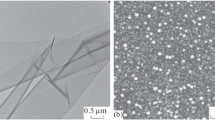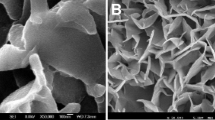Abstract
An amperometric biosensor is described for the detection of organophosphorus pesticides. It is based on the enzyme tyrosinase immobilized on platinum nanoparticles and the use of a glassy carbon electrode modified with graphene. Tyrosinase was immobilized on the electrode surface via electrostatic interaction between a monolayer of cysteamine and the enzyme. In the presence of catechol as a substrate, the pesticides chlorpyrifos, profenofos and malathion can be determined as a result of their inhibition of the enzyme which catalyzes the oxidation of catechol to o-quinone. Platinum nanoparticles and graphene effectively enhance the efficiency of the electrochemical reduction of o-quinone, thus improving sensitivity. Under optimum experimental conditions, the inhibition effect of the pesticides investigated is proportional to their concentrations in the lower ppb-range. The detection limits are 0.2, 0.8 and 3 ppb for chlorpyrifos, profenofos and malathion, respectively. The biosensor displays good repeatability and acceptable stability.

A tyrosinase-based biosensor was developed for determining organophosphorus pesticides. The biosensor owned high sensitivity by combining platinum nanoparticles and graphene, and the immobilized tyrosinase had a great affinity to catechol. Low detection limits and reasonable liner ranges were obtained. The biosensor also displayed good repeatability and acceptable stability.





Similar content being viewed by others
References
Vanloon GW (2001) Environmental chemistry—a global perspective. University Press, Oxford
Yin HS, Ai SY, Xu J, Shi W, Zhu L (2009) Amperometric biosensor based on immobilized acetylcholinesterase on gold nanoparticles and silk fibroin modified platinum electrode for detection of methyl paraoxon, carbofuran and phoxim. J Electroanal Chem 637:21
Jiang X, Li D, Xu X, Ying Y, Li Y, Ye Z, Wang J (2008) Immunosensors for detection of pesticide residues. Biosens Bioelectron 23:1577
Padrón-Sanz C, Halko R, Sosa-Ferrera Z, Santana-Rodríguez JJ (2005) Combination of microwave assisted micellar extraction and liquid chromatography for the determination of organophosphorous pesticides in soil samples. J Chromatogr A 1078:13
Tahboub YR, Zaater MF, Al-Talla ZA (2005) Determination of the limits of identification and quantitation of selected organochlorine and organophosphorous pesticide residues in surface water by full-scan gas chromatography/mass spectrometry. J Chromatogr A 1098:150
Rial-Otero R, Gaspar EM, Moura I, Capelo JL (2007) Chromatographic-based methods for pesticide determination in honey: an overview. Talanta 71:503
Amine A, Mohammadi H, Bourais I, Palleschi G (2006) Enzyme inhibition-based biosensors for food safety and environmental monitoring. Biosens Bioelectron 21:1405
Vakurov A, Simpson CE, Daly CL, Gibson TD, Millner PA (2005) Acetylecholinesterase-based biosensor electrodes for organophosphate pesticide detection: II. Immobilization and stabilization of acetylecholinesterase. Biosens Bioelectron 20:2324
Arduini F, Ricci F, Tuta CS, Moscone D, Amine A, Palleschi G (2006) Detection of carbamic and organophosphorous pesticides in water samples using a cholinesterase biosensor based on Prussian Blue-modified screen-printed electrode. Anal Chim Acta 580:155
Arduini F, Amine A, Moscone D, Palleschi G (2010) Biosensors based on cholinesterase inhibition for insecticides, nerve agents and aflatoxin B1 detection (review). Microchim Acta 170:193
Trojanowicz M, Hitchman ML (1996) Determination of pesticides using electrochemical biosensors. Trends Anal Chem 15:38
Smit MH, Rechnitz GA (1993) Toxin detection using a tyrosinase-coupled oxygen electrode. Anal Chem 65:380
Besombes J-L, Cosnier S, Labbé P, Reverdy G (1995) A biosensor as warning device for the detection of cyanide, chlorophenols, atrazine and carbamate pesticides. Anal Chim Acta 311:255
Anh TM, Dzyadevych SV, Van MC, Renault NJ, Duc CN, Chovelon J-M (2004) Conductometric tyrosinase biosensor for the detection of diuron, atrazine and its main metabolites. Talanta 63:365
Tanimoto de Albuquerque YD, Ferreira LF (2007) Amperometric biosensing of carbamate and organophosphate pesticides utilizing screen-printed tyrosinase-modified electrodes. Anal Chim Acta 596:210
Solé S, Merkoçi A, Alegret S (2003) Determination of Toxic Substances Based on Enzyme Inhibition. Part I. Electrochemical Biosensors for the Determination of Pesticides Using Batch Procedures. Crit Rev Anal Chem 33:89
Chen J, ** Y (2010) Sensitive phenol determination based on co-modifying tyrosinase and palygorskite on glassy carbon electrode. Microchim Acta 169:249
Sánchez-Ferrer Á, Neptuno Rodríguez-López J, García-Cánovas F, García-Carmona F (1995) Tyrosinase: a comprehensive review of its mechanism. Biochim Biophys Acta 1247:1
Cortina-Puig M, Muñoz-Berbel X, Calas-Blanchard C, Marty J-L (2010) Diazonium-functionalized tyrosinase-based biosensor for the detection of tea polyphenols. Microchim Acta 171:187
Li X, Zhang G, Bai X, Sun X, Wang X, Wang E, Dai H (2008) Highly conducting graphene sheets and Langmuir-Blodgett films. Nat Nano 3:538
Wang X, Zhi L, Mullen K (2007) Transparent, conductive graphene electrodes for dye-sensitized solar cells. Nano Lett 8:323
Stankovich S, Dikin DA, Dommett GHB, Kohlhaas KM, Zimney EJ, Stach EA, Piner RD, Nguyen ST, Ruoff RS (2006) Graphene-based composite materials. Nature 442:282
Shan C, Yang H, Han D, Zhang Q, Ivaska A, Niu L (2010) Electrochemical determination of NADH and ethanol based on ionic liquid-functionalized graphene. Biosens Bioelectron 25:1504
Kang X, Wang J, Wu H, Aksay IA, Liu J, Lin Y (2009) Glucose oxidase-graphene-chitosan modified electrode for direct electrochemistry and glucose sensing. Biosens Bioelectron 25:901
Zhou K, Zhu Y, Yang X, Luo J, Li C, Luan S (2010) A novel hydrogen peroxide biosensor based on Au-graphene-HRP-chitosan biocomposites. Electrochim Acta 55:3055
Wang F, Hu S (2009) Electrochemical sensors based on metal and semiconductor nanoparticles. Microchim Acta 165:1
Y-l Y, Ding Y, Ye L-S, **a X-H (2006) Two-step pyrolysis process to synthesize highly dispersed Pt-Ru/carbon nanotube catalysts for methanol electrooxidation. Carbon 44:61
Love JC, Estroff LA, Kriebel JK, Nuzzo RG, Whitesides GM (2005) Self-assembled monolayers of thiolates on metals as a form of nanotechnology. Chem Rev 105:1103
Gomez S, Erades L, Philippot K, Chaudret B, Collière V, Balmes O, Bovin JO (2001) Platinum colloids stabilized by bifunctional ligands: self-organization and connection to gold. Chem Commun 1474:1475
Li Y, Wu Y (2009) Coassembly of graphene oxide and nanowires for large-area nanowire alignment. J Am Chem Soc 131:5851
Lin X, Li Y (2006) A sensitive determination of estrogens with a Pt nano-clusters/multi-walled carbon nanotubes modified glassy carbon electrode. Biosens Bioelectron 22:253
Yildiz HB, Castillo J, Guschin DA, Toppare L, Schuhmann W (2007) Phenol biosensor based on electrochemically controlled integration of tyrosinase in a redox polymer. Microchim Acta 159:27
Portaccio M, Di Tuoro D, Arduini F, Lepore M, Mita DG, Diano N, Mita L, Moscone D (2010) A thionine-modified carbon paste amperometric biosensor for catechol and bisphenol A determination. Biosens Bioelectron 25:2003
Kamin RA, Wilson GS (1980) Rotating ring-disk enzyme electrode for biocatalysis kinetic studies and characterization of the immobilized enzyme layer. Anal Chem 52:1198
Wang S, Tan Y, Zhao D, Liu G (2008) Amperometric tyrosinase biosensor based on Fe3O4 nanoparticles-chitosan nanocomposite. Biosens Bioelectron 23:1781
Wang L, Ran Q, Tian Y, Ye S, Xu J, **an Y, Peng R, ** L (2010) Covalent grafting tyrosinase and its application in phenolic compounds detection. Microchim Acta 171:217
Wang Y, Hasebe Y (2009) Carbon felt-based biocatalytic enzymatic flow-through detectors: chemical modification of tyrosinase onto amino-functionalized carbon felt using various coupling reagents. Talanta 79:1135
Zamfir L-G, Rotariu L, Bala C (2011) A novel, sensitive, reusable and low potential acetylcholinesterase biosensor for chlorpyrifos based on 1-butyl-3-methylimidazolium tetrafluoroborate/multiwalled carbon nanotubes gel. Biosens Bioelectron 26:3692
Kuswandi B, Fikriyah CI, Gani AA (2008) An optical fiber biosensor for chlorpyrifos using a single sol-gel film containing acetylcholinesterase and bromothymol blue. Talanta 74:613
Imato T, Ishibashi N (1995) Potentiometric butyrylcholine sensor for organophosphate pesticides. Biosens Bioelectron 10:435
Campanella L, Lelo D, Martini E, Tomassetti M (2007) Organophosphorus and carbamate pesticide analysis using an inhibition tyrosinase organic phase enzyme sensor; comparison by butyrylcholinesterase + choline oxidase opee and application to natural waters. Anal Chim Acta 587:22
Du D, Ye X, Cai J, Liu J, Zhang A (2010) Acetylcholinesterase biosensor design based on carbon nanotube-encapsulated polypyrrole and polyaniline copolymer for amperometric detection of organophosphates. Biosens Bioelectron 25:2503
Acknowledgements
This work was supported by the National Natural Science Foundation of China (No.21075078) and Natural Science Foundation of Shandong province, China (ZR2010BM005).
Author information
Authors and Affiliations
Corresponding author
Electronic supplementary material
Below is the link to the electronic supplementary material.
ESM. 1
Electronic supplementary material (DOC 151 kb)
Rights and permissions
About this article
Cite this article
Liu, T., Xu, M., Yin, H. et al. A glassy carbon electrode modified with graphene and tyrosinase immobilized on platinum nanoparticles for sensing organophosphorus pesticides. Microchim Acta 175, 129–135 (2011). https://doi.org/10.1007/s00604-011-0665-5
Received:
Accepted:
Published:
Issue Date:
DOI: https://doi.org/10.1007/s00604-011-0665-5




